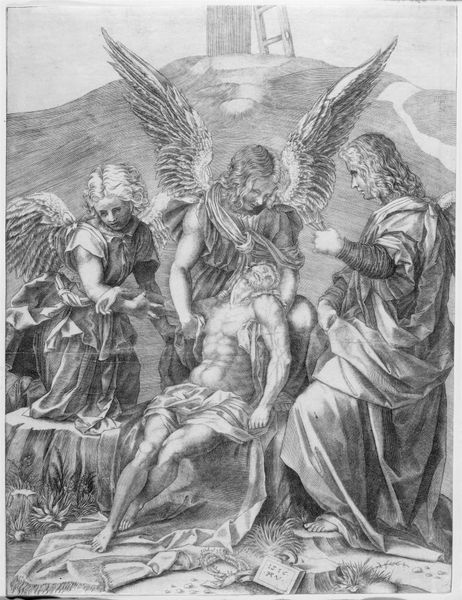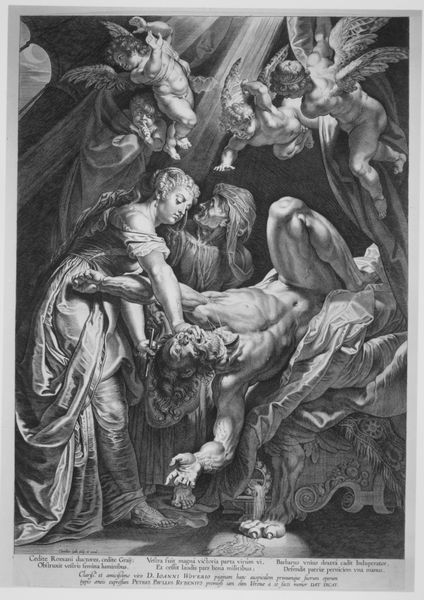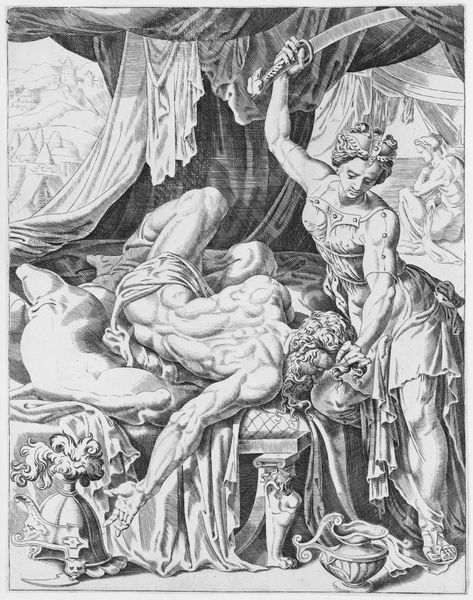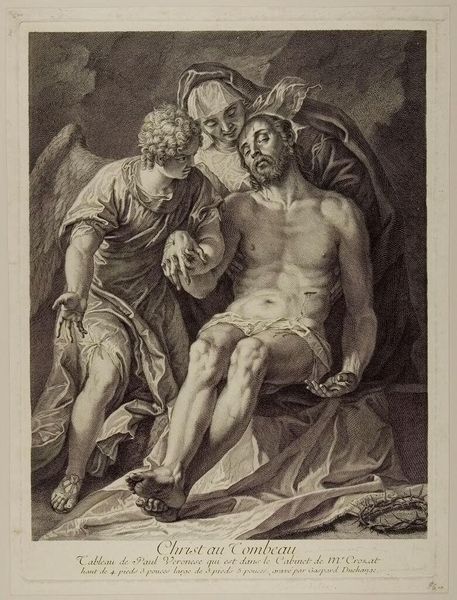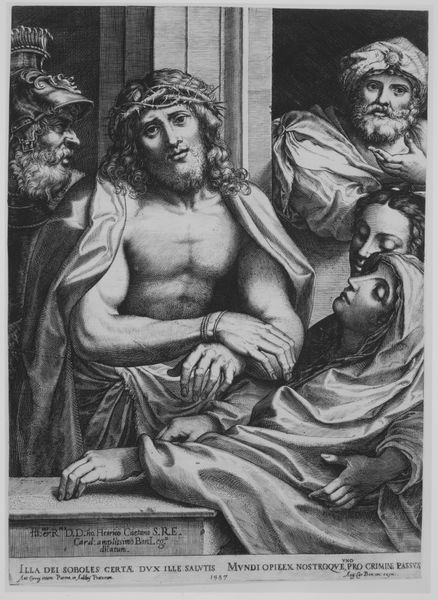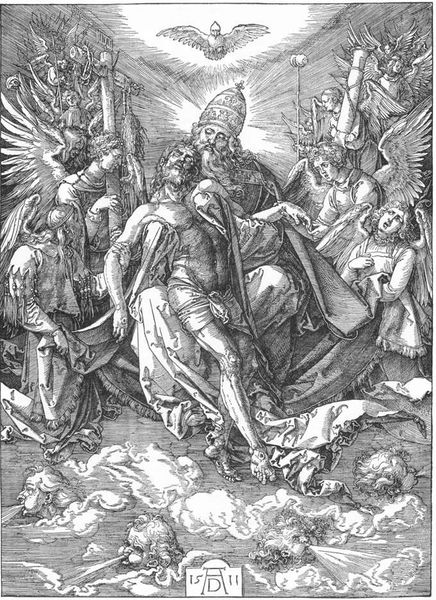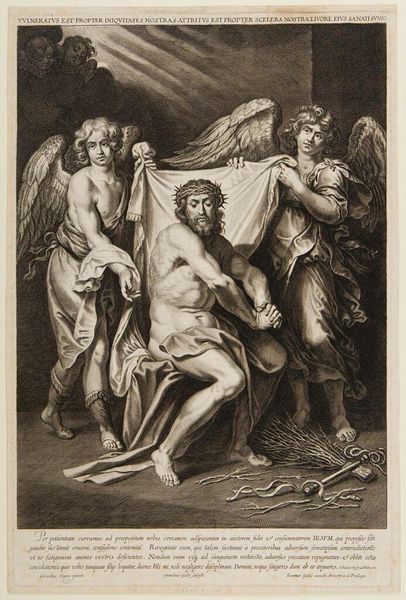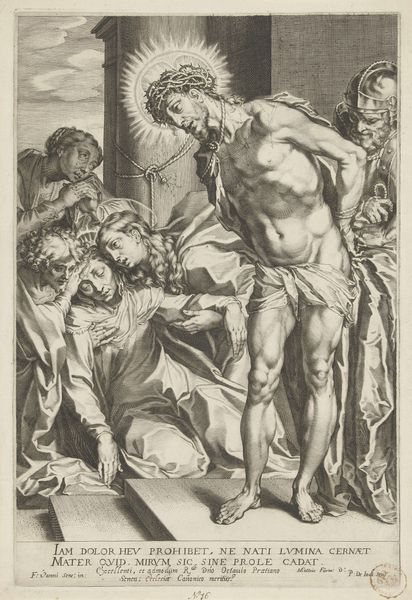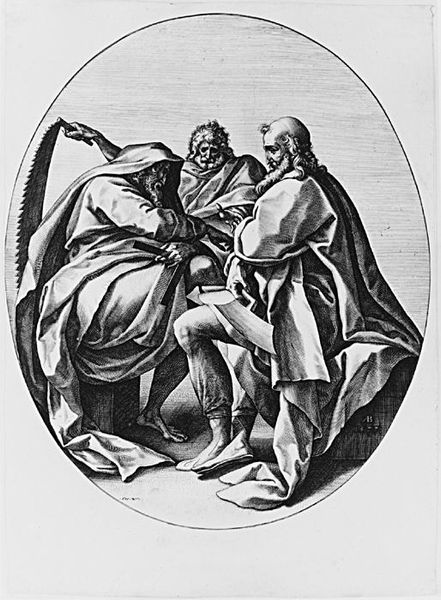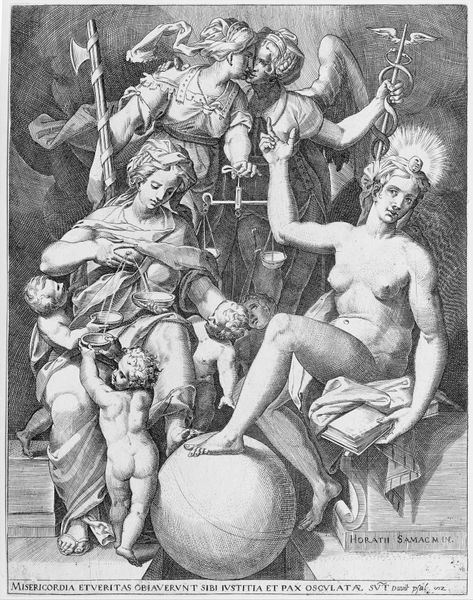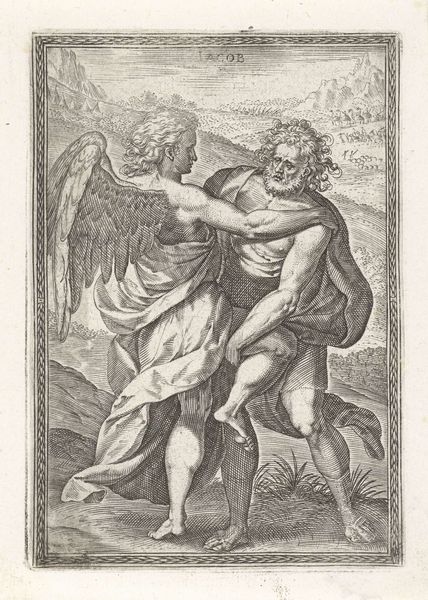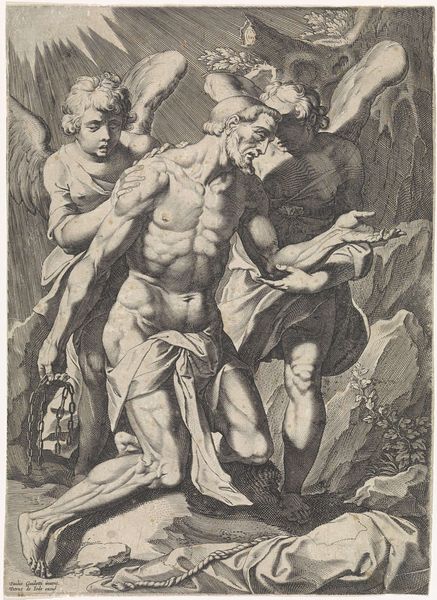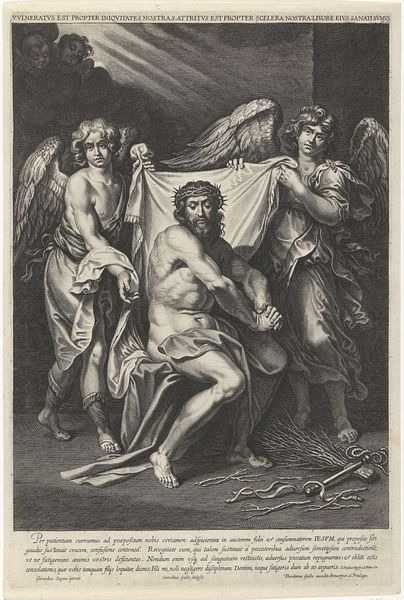
Pieta; Christ supported by the Virgin and an angel at the right 1582
0:00
0:00
drawing, print, engraving
#
portrait
#
drawing
#
allegory
# print
#
mannerism
#
figuration
#
history-painting
#
italian-renaissance
#
engraving
#
virgin-mary
#
miniature
Dimensions: sheet: 15 9/16 x 11 1/4 in. (39.5 x 28.5 cm)
Copyright: Public Domain
Editor: This image just whispers sorrow, doesn’t it? Look at the angle of Christ’s limp hand, the stark shadows, like grief clinging to the figures. It's intensely moving, in a dark, theatrical way. Curator: This is Agostino Carracci's "Pieta; Christ supported by the Virgin and an angel at the right," an engraving from 1582. Placed within the context of late 16th-century Italy, it serves as a powerful commentary on religious devotion, suffering, and the iconography surrounding the Virgin Mary. How does it speak to you, particularly in relation to traditional representations of the Pietà? Editor: I see an emotional rawness—Carracci's version isn't just about religious piety; it's a study in the messy, complicated nature of grief. Notice the angel's somewhat distracted gaze, as though they're also trying to process the trauma. Curator: That observation is interesting, especially if we think of the role angels occupy in Renaissance art: Messengers between the divine and earthly realms, symbols of hope. Carracci, though, offers a subtle critique—his angel almost appears overwhelmed by the pain. Considering post-Reformation theological debates on free will, salvation, and the nature of human suffering, this angel reflects a world where faith is wrestling with doubt. Editor: You're right, the angel embodies doubt. And look at Mary’s face—there’s an exhaustion there that goes beyond simple sorrow; it speaks to a centuries-long legacy of female suffering, wouldn't you say? Curator: Absolutely. Her grief intersects with societal expectations of motherhood, martyrdom, and female identity. It is a space where these burdens, historically carried by women, become visible in a devotional scene. We can explore how intersectional understandings of gender, religion, and power structures impact art. Editor: It’s unsettling, but beautiful—and brutally honest. I almost want to look away, and yet... Curator: It’s that tension, that complex emotional space, where meaning truly resides and resonates even now. Editor: An image for grappling, for feeling, definitely not one for easy answers.
Comments
No comments
Be the first to comment and join the conversation on the ultimate creative platform.
